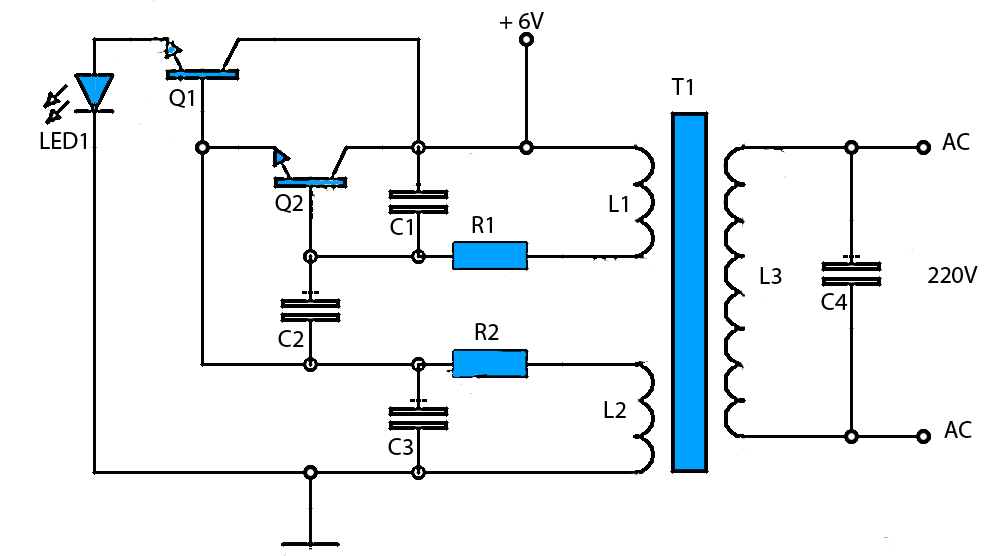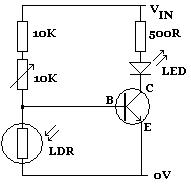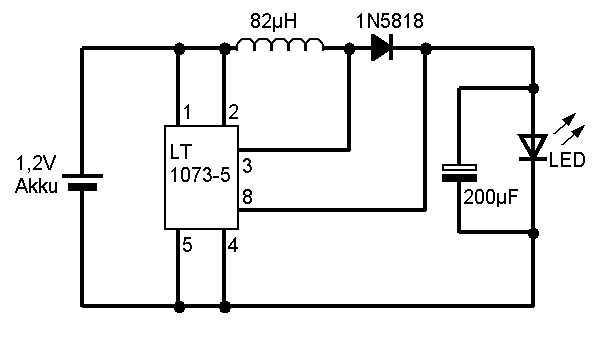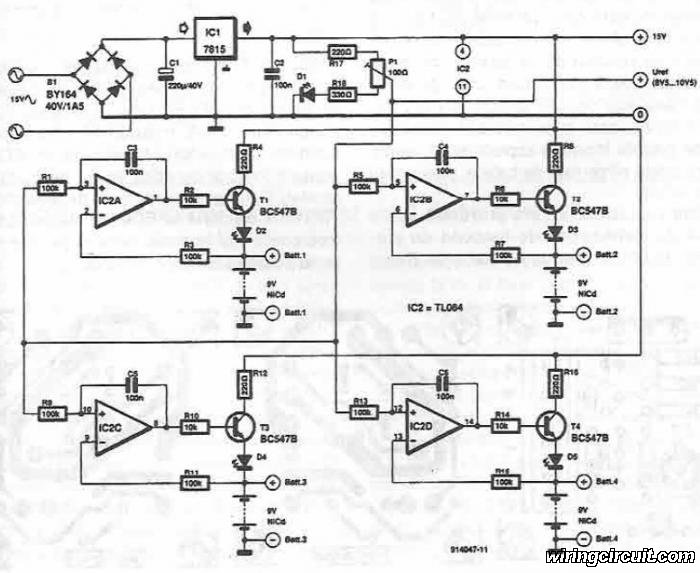
neon emergency light battery schematic
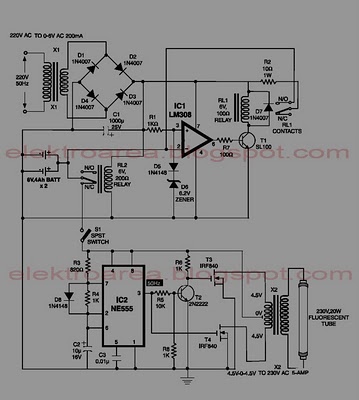
This circuit is an IC-controlled emergency light system. It automatically switches on the light during a mains failure and includes a battery charger with overcharge protection. When the mains power is absent, relay RL2 is in a de-energized state, allowing the battery supply to feed the inverter section through its normally closed (N/C) contacts and switch S1. The inverter section utilizes IC2 (NE555) configured in astable mode to generate sharp pulses at a frequency of 50 Hz, which drive the MOSFETs. The output from IC3 is connected directly to the gate of MOSFET T4, while the signal is inverted by gate transistor T2 before being applied to MOSFET T3. This configuration enables the power amplifier, constructed from MOSFETs T3 and T4, to operate in push-pull mode. The output across the secondary of transformer X2 is capable of driving a 230-volt, 20-watt fluorescent tube. If lighting is not needed during a mains failure, switch S1 can be turned to the off position. The battery overcharge prevention circuit is designed around IC1 (LM308), with its non-inverting pin maintained at a reference voltage of approximately 6.9 volts, derived from diode D5 (1N4148) and 6.2-volt zener diode D6.
This circuit design integrates several essential components to ensure reliable operation during power outages. The use of the NE555 timer IC in astable mode is crucial for generating a stable pulse signal, which is necessary for driving the MOSFETs effectively. The push-pull configuration of the MOSFETs allows for efficient power amplification, facilitating the driving of a fluorescent tube with minimal energy loss.
The relay RL2 plays a pivotal role in switching the power source from the mains to the battery when a power failure occurs. Its de-energized state ensures that the battery supply is routed to the inverter section, allowing for seamless transition and uninterrupted lighting. The inclusion of switch S1 provides user control over the lighting, enabling the option to turn off the light during an outage if desired.
The overcharge protection circuit, implemented with the LM308 operational amplifier, is a critical safety feature. By maintaining a reference voltage of 6.9 volts, it effectively monitors the battery voltage and prevents overcharging, thereby extending the lifespan of the battery. Diodes D5 and D6 work in tandem to establish this reference voltage, ensuring that the charging process remains within safe limits.
Overall, this emergency light circuit combines functionality, efficiency, and safety, making it a reliable solution for lighting needs during power interruptions. The careful selection of components and their configuration ensures that the system operates smoothly and effectively in various scenarios.This circuit is IC controlled emergency light. This series of automatic switching-on of the light on mains failure and battery charger with overcharge protection. When mains is absent, the relay RL2 is in deenergised state, feeding battery supply to the inverter section via its N / C contacts and switch S1.
The inverter section comprises IC2 (NE55 5) which is used in a stable fashion to produce sharp pulses at the rate of 50 Hz for driving the MOSFETs. The output of IC3 is fed to the gate of MOSFET (T4) directly while it is applied to MOSFET (T3) after inversion by gate transistor T2.
Thus the power amplifier built around MOSFETs T3 and T4 functions in push-pull mode. The output across the secondary of transformer X2 can easily drive a 230-volt, 20-watt fluorescent tube. In case light is not required to be on during mains failure, simply flip the switch S1 to off position.
Battery overcharge preventer circuit is built around IC1 (LM308). Its non-inverting pin is held at a reference voltage of approximately 6. 9 volts which is obtained using diode D5 (1N4148) and 6. 2-volt zener D6. 🔗 External reference
This circuit design integrates several essential components to ensure reliable operation during power outages. The use of the NE555 timer IC in astable mode is crucial for generating a stable pulse signal, which is necessary for driving the MOSFETs effectively. The push-pull configuration of the MOSFETs allows for efficient power amplification, facilitating the driving of a fluorescent tube with minimal energy loss.
The relay RL2 plays a pivotal role in switching the power source from the mains to the battery when a power failure occurs. Its de-energized state ensures that the battery supply is routed to the inverter section, allowing for seamless transition and uninterrupted lighting. The inclusion of switch S1 provides user control over the lighting, enabling the option to turn off the light during an outage if desired.
The overcharge protection circuit, implemented with the LM308 operational amplifier, is a critical safety feature. By maintaining a reference voltage of 6.9 volts, it effectively monitors the battery voltage and prevents overcharging, thereby extending the lifespan of the battery. Diodes D5 and D6 work in tandem to establish this reference voltage, ensuring that the charging process remains within safe limits.
Overall, this emergency light circuit combines functionality, efficiency, and safety, making it a reliable solution for lighting needs during power interruptions. The careful selection of components and their configuration ensures that the system operates smoothly and effectively in various scenarios.This circuit is IC controlled emergency light. This series of automatic switching-on of the light on mains failure and battery charger with overcharge protection. When mains is absent, the relay RL2 is in deenergised state, feeding battery supply to the inverter section via its N / C contacts and switch S1.
The inverter section comprises IC2 (NE55 5) which is used in a stable fashion to produce sharp pulses at the rate of 50 Hz for driving the MOSFETs. The output of IC3 is fed to the gate of MOSFET (T4) directly while it is applied to MOSFET (T3) after inversion by gate transistor T2.
Thus the power amplifier built around MOSFETs T3 and T4 functions in push-pull mode. The output across the secondary of transformer X2 can easily drive a 230-volt, 20-watt fluorescent tube. In case light is not required to be on during mains failure, simply flip the switch S1 to off position.
Battery overcharge preventer circuit is built around IC1 (LM308). Its non-inverting pin is held at a reference voltage of approximately 6. 9 volts which is obtained using diode D5 (1N4148) and 6. 2-volt zener D6. 🔗 External reference
